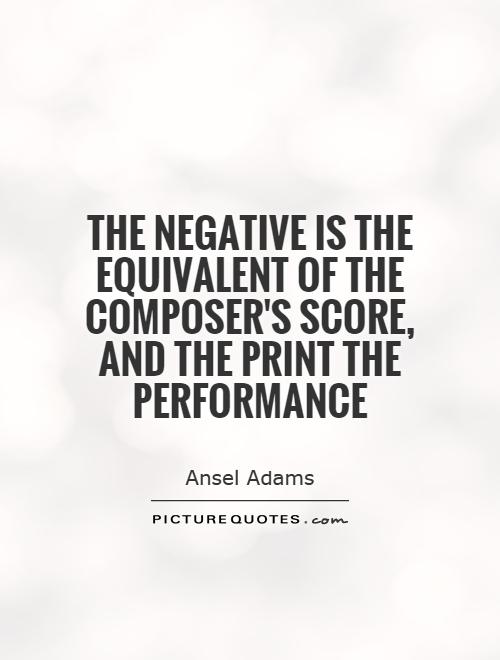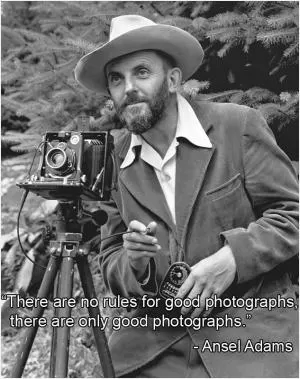The negative is the equivalent of the composer's score, and the print the performance

The negative is the equivalent of the composer's score, and the print the performance
Ansel Adams, a renowned American photographer and environmentalist, is often credited with revolutionizing the art of landscape photography. His iconic black and white images of the American West captured the beauty and grandeur of the natural world in a way that had never been seen before. Adams' meticulous attention to detail and technical mastery of the medium set him apart from his contemporaries and established him as a true master of the craft.One of the key elements of Adams' photographic process was his meticulous attention to the negative. In his own words, "The negative is the equivalent of the composer's score." For Adams, the negative was the foundation upon which the final image would be built. He spent countless hours in the darkroom, carefully developing and printing his negatives to achieve the precise tonal range and contrast that he envisioned for his final prints.
Adams' dedication to the negative as the starting point of his creative process is evident in the stunning clarity and detail of his images. His prints are known for their rich tonal range, sharp focus, and exquisite composition. Each print is a carefully crafted performance of the original negative, brought to life through Adams' technical skill and artistic vision.
In many ways, Adams' approach to photography can be seen as a metaphor for the creative process as a whole. Just as a composer must carefully craft a score before it can be performed by musicians, a photographer must first create a negative before it can be transformed into a final print. The negative serves as the blueprint for the final image, guiding the photographer's decisions in the darkroom and shaping the overall aesthetic of the finished print.












 Friendship Quotes
Friendship Quotes Love Quotes
Love Quotes Life Quotes
Life Quotes Funny Quotes
Funny Quotes Motivational Quotes
Motivational Quotes Inspirational Quotes
Inspirational Quotes